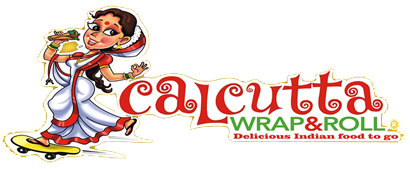HOLI
March 27th, 2013
Holi is my favorite celebration, or, at least, it used to be when I was growing up. After all, it is a day when all the rules seem to be relaxed, especially from a child’s point of view. Imagine being able to play with color all day, and by “play” I mean actually being granted the liberty to do some generally taboo stuff, like spraying, not just friends but grown-ups as well, with colored water and smearing “gulal” or colored powder on their faces! Wow! What would I not give to go back to playing Holi with that kind of abandon? But I am getting ahead of myself here. Let me explain what this celebration is all about and why these color-capers are permitted, even indulged, on this day.
To tell the actual story behind “Holi,” the Indian festival of color, I would have to start with Prahlad, the boy devotee of Lord Vishnu, the Preserver form of the Supreme Being in the Hindu Trinity. Prahlad’s father, the demon king Hiranyakashipu, had ordered his subjects to worship none other than him, an order that his son had refused to heed. Prahlad had devoted himself to the worship of Lord Vishnu and this had so enraged his father that he had repeatedly attempted to kill his own son. Each time Lord Vishnu had intervened and saved Prahlad. Finally, Hiranyakashipu asked his sister, Holika, to help him execute his evil plan. Holika had a boon that allowed her to be unscathed by flames and so Hiranyakashipu asked her to carry Prahlad into a blazing fire. The young Prahlad, who kept chanting the Lord’s name while going through the fire, was protected because of his devotion and came through unharmed, while Holika, whose boon did not work because she had not entered the fire alone, was consumed. Thus Hiranyakashipu’s evil plan was foiled and Holi came to be known as the celebration of the triumph of goodness, the destruction of evil and the power of true devotion. Even today, the burning of Holika is enacted in towns and villages all over India by burning effigies of her in huge bonfires. People clean out their homes and burn their refuse at this time of year in individual tributes to the story of Holi. What is interesting to add here, is that this is the time of year when infectious diseases are on the rise and the burning of household refuse aids in the general well-being by killing the disease-breeding bacteria. It is believed that the same is true of the “gulal” or colored powder used during the play with color, which is the other aspect of this festival. Originally gulal was made out of the dried seeds of tropical plants like Palash and Neem, which have medicinal qualities and are said to ward off infection. So the use of gulal in early spring is considered especially beneficial to health.
Gulal brings me to the playful aspect of Holi, the “Rang Barse” or “Shower of Color” that happens on the streets and courtyards, in towns and villages, all over the nation. This tradition of celebrating with color is derived from the love-legend of Krishna and Radha. Lord Krishna is the eighth avatar (incarnation) of the Supreme Lord Vishnu and He is portrayed in many forms: as an infant on Yashoda’s lap, a flute-playing youth tending to his cattle, as a lover playing pranks on his beloved Radha and the Gopis (cow-herding maidens). Krishna grew up in this cowherd community and Radha was his childhood companion with whom he played, danced, quarreled and later fell in love. The Krishna-Radha love stories are numerous and they are interpreted as being symbolic of the human quest for union with the divine. The youthful Krishna is mischievous and is forever teasing Radha and the Gopis, using “pichkaris” (brass sprinklers) to squirt colored water on them. Krishna’s play with color is recreated during Holi when the application of gulal allows people to shed their inhibitions and rejoice without restraint. What a delightful way to usher in the spring!
In certain parts of India, Holi revelers form a human pyramid to reach the pot of buttermilk suspended from balconies and rooftops, in an enactment of little Krishna’s stealing of buttermilk from his mother’s pantry.
Whatever the traditions of Holi each region carries out, the common thread through all these celebrations is fun and food. This is also the time for enjoying cooling beverages like Thandai. With the weather turning warm, the cooling effect of Thandai, made with seeds of watermelon, cantaloupe and lotus stem, almonds, cashew nuts, cardamom, fennel and saffron is very refreshing. Sweets, of course, play a major role in the festival of color and abundant varieties of sweets are cooked and eaten on this day.
While we cannot transport you to a world where colored water is freely sprayed from pichkaris and buttermilk is for the taking if the human pyramid is high enough, Calcutta Wrap & Roll promises to bring you the authentic taste of India in each and every dish which is carefully prepared for your satisfaction. So come on in and treat yourself! Happy Holi!
